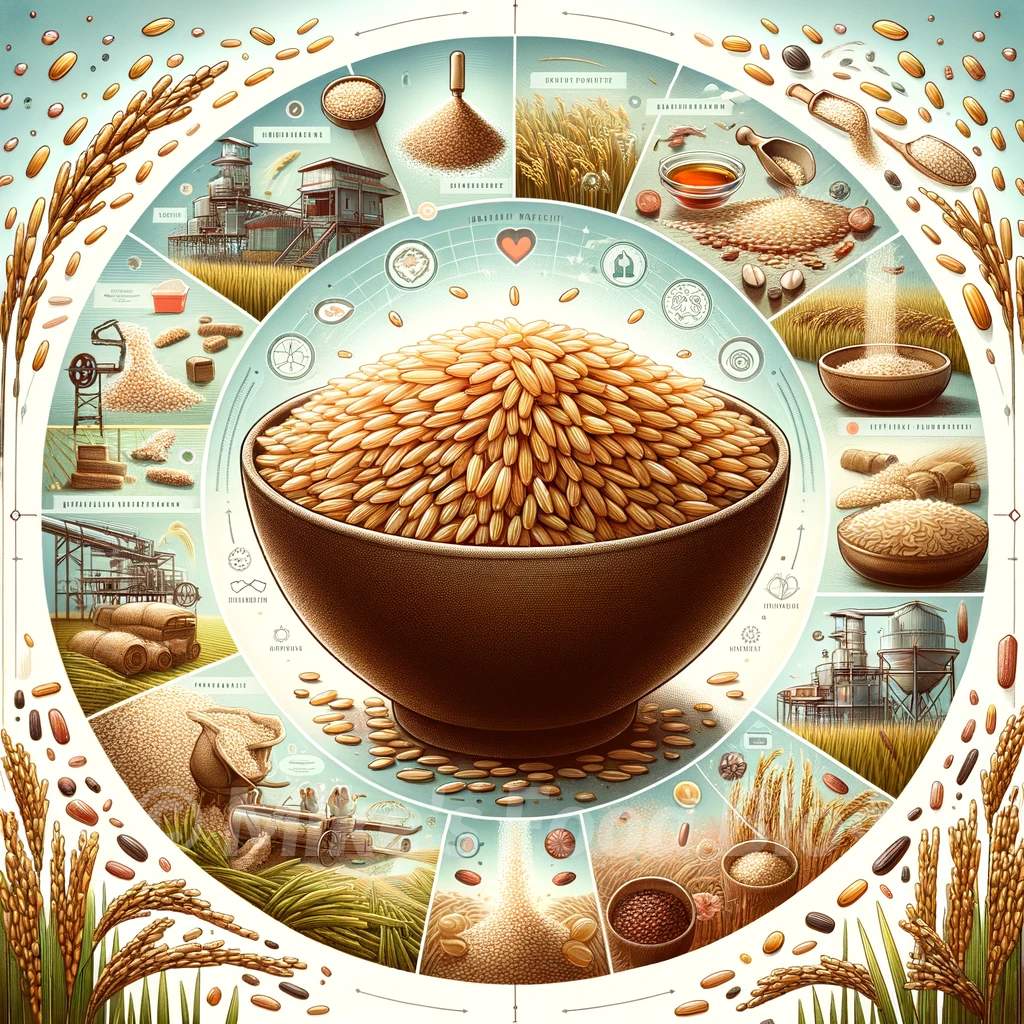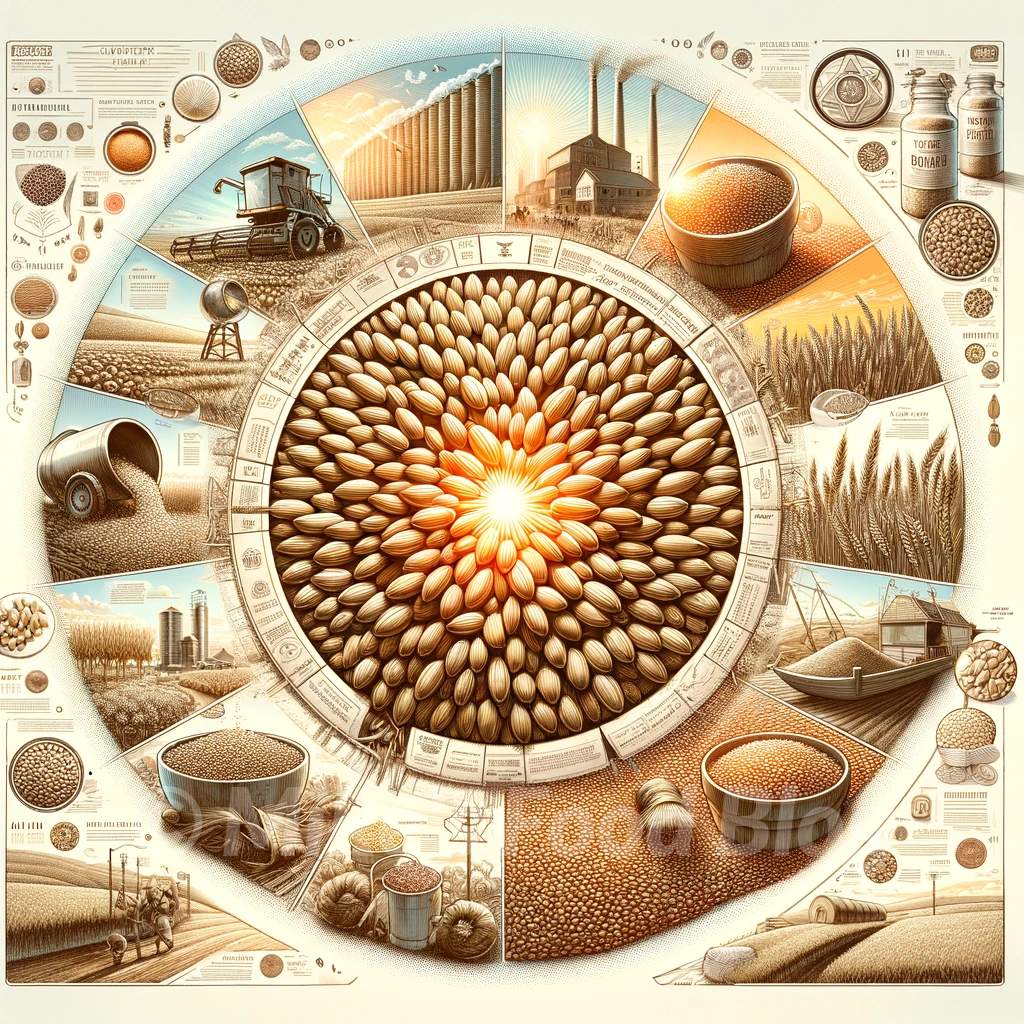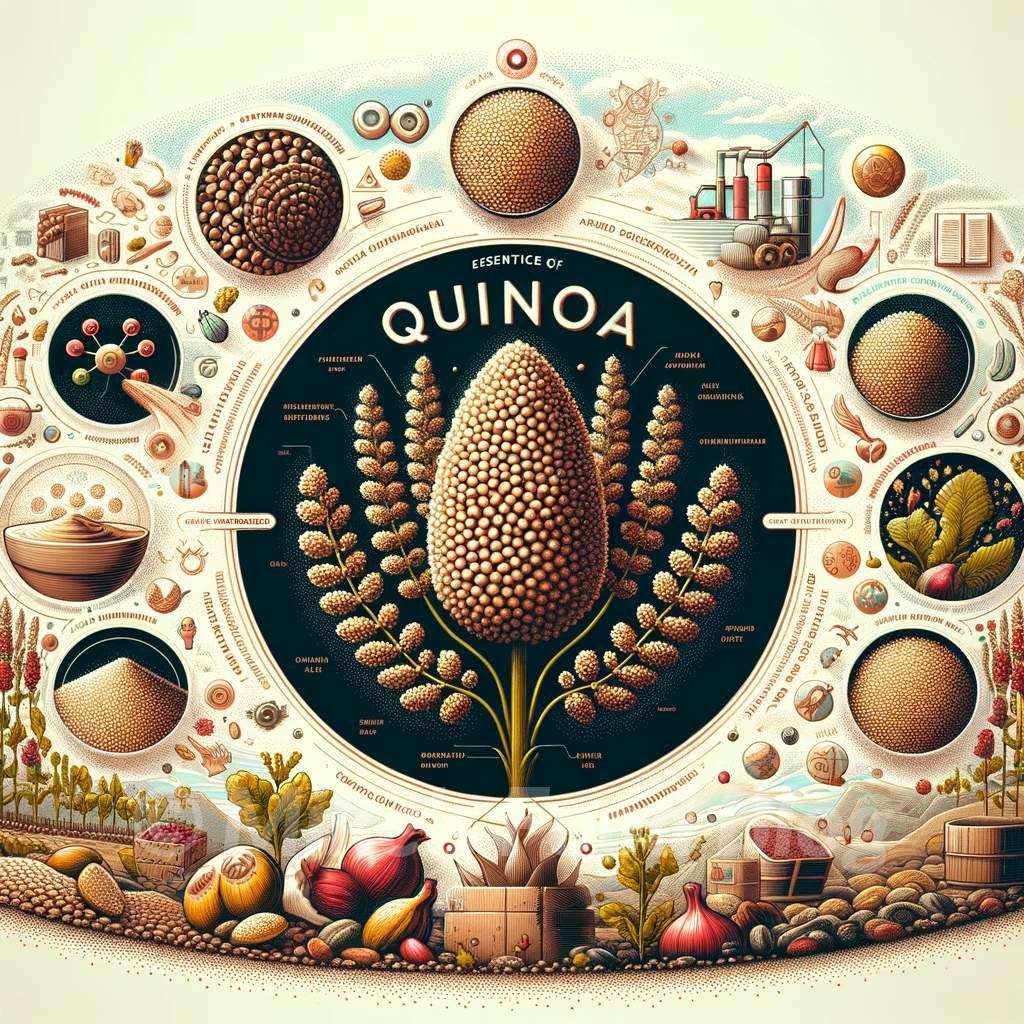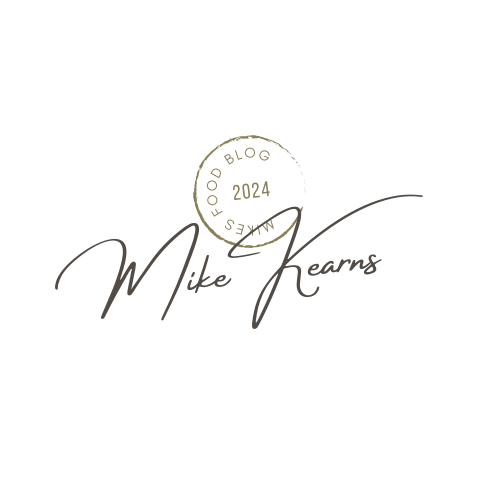Table of Contents
Perfect Trio: Brown Rice - Farro - Quinoa
There’s a combination of grains that I love to use. I call it my power grain mix; brown rice, quinoa, and farro. This combination is amazing full of protein, healthy benefits, and can handle anything you throw at it.
Nutritional Benefits
Brown Rice: A whole grain, brown rice is rich in fiber, vitamins, and minerals such as manganese, which aids in digestion and overall metabolic activity. It's also a good source of slow-digesting carbohydrates, providing long-lasting energy.
Quinoa: Quinoa is a complete protein, meaning it contains all nine essential amino acids our bodies cannot produce on their own. It's also gluten-free, making it a great option for those with gluten sensitivities. Quinoa is high in fiber, magnesium, B vitamins, iron, potassium, calcium, phosphorus, vitamin E, and various beneficial antioxidants.
Farro: Farro is a type of ancient wheat grain that's high in fiber, protein, vitamins, minerals, and antioxidants. It's known for its nutty flavor and chewy texture, and it's particularly rich in fiber, magnesium, zinc, and B vitamins, making it beneficial for heart health, digestion, and overall bodily functions.
Culinary Uses
This power grain mix is incredibly versatile and can be used in a variety of dishes:
Salads: Cooked and cooled, these grains can be tossed with vegetables, nuts, seeds, and a dressing for a hearty salad. They add texture, nutrition, and a satisfying heft to salads.
Bowls: Serve as a base for bowl meals. Top with your choice of proteins, vegetables, and a flavorful sauce for an easy, nutritious meal.
Soups and Stews: Add cooked grains towards the end of cooking soups or stews for extra body and nutrition.
Pilafs and Side Dishes: Mix with sautéed vegetables, herbs, and spices for a flavorful side dish.
Breakfast Cereals: Cooked grains can be reheated with a bit of milk or water and mixed with sweeteners, fruits, and nuts for a warming breakfast.
Preparation Tips
Cooking in Bulk: Since all three grains have relatively similar cooking times, they can be cooked in bulk at the start of the week and stored in the refrigerator, making it easy to add them to meals on the fly.
Seasoning: These grains absorb flavors well, so consider cooking them in vegetable or chicken broth and adding herbs or spices for extra flavor.
Texture Variations: For a varied texture in your dishes, adjust the ratio of the grains according to your preference. For instance, increase quinoa for a softer texture, or farro for a chewier bite.
Combining these grains not only enhances the nutritional profile of your meals but also introduces a variety of textures and flavors, making your meals more interesting and satisfying. Whether you're looking to boost your protein intake, add more fiber to your diet, or simply enjoy a hearty, comforting dish, this power grain mix is a fantastic choice.

Salads Soups Bowls And Breakfast Cereals Made With Brown Rice Quinoa And Farro On A Kitchen Counter
Brown Rice
Nutritional Benefits
Rich in Fiber: Brown rice is a good source of dietary fiber, which is beneficial for digestive health. Fiber helps to keep bowel movements regular and can aid in preventing constipation. It also helps to make you feel full, which can contribute to weight management.
High in Vitamins and Minerals: It contains vitamins such as B vitamins (especially niacin, thiamine, and B6), which are crucial for energy metabolism and the functioning of the nervous system. It's also rich in minerals like manganese, selenium, and magnesium. Manganese is important for bone development and metabolic functions, selenium has antioxidant properties, and magnesium is vital for muscle and nerve functions as well as heart health.
Antioxidants: Apart from vitamins and minerals, brown rice contains antioxidants which help in fighting free radicals in the body, thus reducing oxidative stress and lowering the risk of chronic diseases.
Whole Grain Benefits: Consuming whole grains like brown rice has been linked to a lower risk of heart disease, type 2 diabetes, and certain forms of cancer. Whole grains are an essential part of a healthy diet.
While brown rice is a nutritious choice, it's important to consume it as part of a varied diet. It contains phytic acid, an "anti-nutrient" that can bind minerals and reduce their absorption. However, the health benefits of consuming whole grains like brown rice generally outweigh the potential negative effects of phytic acid for most people.
Brown rice is also considered more environmentally friendly than white rice because it requires less processing. However, it's important to consider sourcing practices, as the production methods and distance it travels to reach your plate can impact its environmental footprint.
In summary, brown rice is a nutritious, versatile, and delicious whole grain that can enhance your diet. Whether you're looking for a healthy carbohydrate option, trying to increase your fiber intake, or simply want to experiment with new recipes, brown rice is a fantastic choice.

Deep Into The Essence Of Brown Rice
Farro
Farro is an ancient grain that has been a staple in the diet of many countries for thousands of years, especially in Italy and other parts of the Mediterranean and the Middle East. It refers to the grains of three wheat species, which are distinguished as einkorn (farro piccolo), emmer (farro medio), and spelt (farro grande). Emmer is the type most commonly found and used in cooking today. Farro is prized for its nutty flavor, chewy texture, and numerous health benefits. Let's delve into other interesting facets of farro.
Nutritional Benefits
High in Fiber: Farro is a good source of dietary fiber, which is beneficial for digestive health, helping to prevent constipation, and may aid in weight management by providing a feeling of fullness.
Protein Content: It provides a higher protein content than many other whole grains, making it a great choice for vegetarians, vegans, and anyone looking to add plant-based protein to their diet.
Rich in Nutrients: Farro is packed with vitamins and minerals, including B vitamins (notably niacin, thiamine, and riboflavin), magnesium, zinc, and iron. These nutrients contribute to energy production, immune function, and overall health.
Antioxidants: Like other whole grains, farro contains antioxidants such as polyphenols, which can help combat oxidative stress and reduce inflammation in the body.
Farro is a wheat product, so it contains gluten. This makes it unsuitable for those with celiac disease or a gluten sensitivity. For others, it provides a nutritious whole grain option that can support a healthy diet.
As an ancient grain, farro is often touted for its sustainability. It can grow in poor soil conditions with relatively low water and fertilizer needs, making it an environmentally friendly crop. It has also seen a resurgence in popularity as consumers look for nutritious, whole food options and as chefs and home cooks explore traditional ingredients with modern recipes.

Deep Into The Essence Of Farro
Quinoa
Quinoa, often hailed as a "superfood," is a seed that is prepared and eaten similarly to a grain. It has been a staple food for thousands of years in the Andean region of South America, where it's prized for its nutritional content and adaptability in a variety of dishes. Unlike many grains, quinoa is gluten-free and is considered a complete protein, containing all nine essential amino acids, which makes it particularly valuable in vegetarian and vegan diets. Let's explore the nutritional profile, culinary uses, and other aspects of quinoa.
Nutritional Benefits
Complete Protein: One of quinoa's most notable attributes is its status as a complete protein, providing all essential amino acids in a balanced form, which is rare in the plant kingdom. This makes it an excellent protein source for those who do not consume animal products.
High in Fiber: Quinoa contains more fiber than most grains, contributing to digestive health, helping to reduce blood sugar levels, lowering cholesterol, and aiding in weight management.
Rich in Minerals: It is particularly high in magnesium, potassium, zinc, and iron, minerals that are crucial for muscle function, nerve signaling, immune health, and oxygen transport.
Vitamins and Antioxidants: Quinoa is also a good source of B vitamins, vitamin E, and various beneficial antioxidants, which can help reduce oxidative stress and inflammation in the body.
Quinoa is coated with saponins, naturally occurring compounds that can impart a bitter taste. Rinsing quinoa under cold water before cooking can remove these.
Quinoa is not only a nutritious choice for the general population but also suitable for those on a gluten-free diet. However, as with any food, it's best consumed as part of a varied diet to ensure a broad intake of nutrients.
Quinoa is known for its hardiness and ability to grow in harsh, arid environments where other crops cannot thrive. This has led to increased interest in quinoa's potential as a sustainable crop. However, the rising global demand for quinoa has also raised concerns about its impact on traditional growing areas, including potential economic and ecological effects. Sustainable sourcing and fair trade practices are important considerations when purchasing quinoa.

Deep Into The Essence Of Quinoa
The Combination Is Powerful
Combining brown rice, quinoa, and farro into your meals introduces a remarkably versatile, nutritious, and satisfying blend, ideal for a wide range of culinary applications. This powerhouse trio not only elevates the sensory experience of dining with its diverse textures and flavors but also offers a wealth of health benefits, making every meal both a delight to the senses and a boon to well-being.
Versatility and Culinary Adaptability: The blend of brown rice, quinoa, and farro brings together a unique symphony of textures—quinoa's light fluffiness, brown rice's chewy substantiality, and farro's dense, nutty chew—creating a depth of texture that can elevate any dish. This combination is incredibly adaptable, fitting seamlessly into a myriad of recipes from across the globe. It can be incorporated into salads, bowls, soups, stews, and as a side, proving its worth from breakfast through dinner. The grains' adaptability in both cold and hot dishes, along with their suitability for advance preparation, makes them a convenient choice for meal prepping or for those times when you need a nutritious meal without much fuss.
Nutritional Profile: From a nutritional standpoint, mixing brown rice, quinoa, and farro offers a comprehensive array of vitamins, minerals, fibers, and proteins. Quinoa stands out as a complete protein source, containing all nine essential amino acids, which complements the rich mineral and vitamin content found in brown rice and farro. Together, they form a blend that is not just rich in macronutrients but also teeming with micronutrients essential for overall health. The high fiber content across these grains aids in digestion and cardiovascular health by helping to manage blood sugar and cholesterol levels.
Macronutrient Composition: In terms of macronutrients, this grain mix is particularly notable for its protein and complex carbohydrates. Quinoa, for example, contains about 8 grams of protein per cup (cooked), brown rice provides about 5 grams of protein per cup (cooked), and farro offers about 8 grams of protein per cup (cooked). Carbohydrate levels are also significant, with quinoa and farro providing about 39 grams and brown rice about 45 grams per cooked cup, making this mix an excellent source of sustained energy and fullness, contributing to weight management and satiety throughout the day.
Sensory and Emotional Experience: The culinary delight of enjoying a meal that incorporates these grains goes beyond just taste; it's about the rich textures and earthy flavors that make everyday meals more exciting and satisfying. There's a comforting aspect to consuming these wholesome grains, providing not just a meal but an experience that nourishes both the body and the soul. Knowing that you're consuming foods that are beneficial to your health can also enhance the emotional satisfaction of dining, contributing to a sense of well-being and contentment.
Enhancing the flavor profile of a grain mix like brown rice, quinoa, and farro can transform it from a simple side dish into a culinary centerpiece. Here are some ingredients and ideas to add depth, richness, and variety to the mix, making every bite a delightful experience:
Fresh Herbs and Spices
Herbs: Fresh herbs such as parsley, cilantro, basil, or mint can add a burst of freshness and color. Finely chop them and stir into the cooked grains or sprinkle on top as a garnish.
Spices: Incorporate spices like cumin, coriander, turmeric, or smoked paprika during cooking to infuse the grains with warm, earthy flavors. A dash of cinnamon or nutmeg can add an unexpected twist, especially in sweet or breakfast-oriented dishes.

Brown Rice Quinoa And Farro Combined With A Variety Of Fresh Herbs And Spices
Nuts and Seeds
Nuts: Toasted almonds, walnuts, pecans, or pine nuts introduce a crunchy texture and a nutty flavor that compliments the earthiness of the grains.
Seeds: Pumpkin, sunflower, or sesame seeds can add a nutritious crunch. Try toasting them lightly to enhance their flavor before mixing in.

Brown Rice Farro And Quinoa Combined With A Variety Of Nuts And Seeds
Aromatics and Onions
Garlic and Onion: Sauté garlic and onion until they're soft and golden before adding the grains to cook, infusing them with a savory foundation.
Scallions and Chives: Mix in chopped scallions or chives before serving for a mild onion flavor and a pop of green color.

Brown Rice Farro And Quinoa With Garlic Onion Scallions And Chives
Vegetables
Roasted Vegetables: Roasted vegetables like bell peppers, zucchini, carrots, or cherry tomatoes add sweetness and a smoky depth. Their vibrant colors also make the dish more visually appealing.
Leafy Greens: Stir in spinach, kale, or arugula for a nutrient boost. The heat from the cooked grains will wilt the greens slightly, making them tender and easy to incorporate.

Brown Rice Farro And Quinoa Combined With Roasted Vegetables And Leafy Greens
Citrus and Vinegar
Lemon or Lime Juice: A squeeze of lemon or lime adds a bright, acidic contrast to the nutty and earthy flavors of the grains.
Vinegar: A splash of balsamic, red wine, or apple cider vinegar can introduce a subtle tanginess that elevates the overall taste.

Brown Rice Farro And Quinoa Enhanced With The Addition Of Lemon Or Lime Juice
Cheeses and Dairy
Feta or Goat Cheese: Crumbled feta or goat cheese adds a creamy texture and a salty tang that can balance the earthiness of the grains.
Parmesan: Grated Parmesan or Pecorino cheese lends a savory umami flavor that pairs well with almost any combination of grains and vegetables.

Brown Rice Farro And Quinoa Topped With Different Types Of Cheeses
Oils and Butters
Quality Olive Oil: Drizzle high-quality extra virgin olive oil over the cooked grains for a rich, fruity flavor.
Flavored or Infused Oils: Oils infused with herbs, garlic, or chili can add an instant flavor boost with just a drizzle.
Butter or Ghee: Stirring in a small amount of butter or ghee at the end of cooking can add a luxurious richness and help meld flavors together.

Brown Rice Farro And Quinoa With Different Types Of Oils And Fats
Protein Additions
Beans and Legumes: For a protein-packed dish, mix in cooked beans, chickpeas, or lentils. They add texture and fiber, making the grain mix a complete meal on its own.
Grilled or Roasted Meats: Chunks of grilled chicken, beef, or roasted pork can turn the grain mix into a hearty main dish.

Brown Rice Farro And Quinoa Mixed With Beans Legumes And Meat
Conclusion
Incorporating these items can significantly enhance the taste and nutritional value of your grain mix, allowing for endless variations that cater to different palates and dietary needs. Experiment with combinations of these ingredients to find your perfect blend, creating dishes that are both healthful and flavorful.
The combination of brown rice, quinoa, and farro is not just a strategic choice for those looking to enrich their diet with a nutritious blend of grains; it's also an opportunity to explore a variety of dishes enriched with textures and flavors. For all of these reasons, the mix has become my go to. This mix supports a healthy lifestyle by providing essential nutrients, including a significant amount of plant-based protein and complex carbohydrates, while also offering a versatile base for creative and delicious meal preparation.
Like Power Grains?
Share it with your friends. Comment and review below. Thanks for the love.
Comments
Reviews
No reviews yet. Be the first to review!
Share Your Thoughts About Mike's Power Grains














Sue - Thanks for letting me know you are enjoying the trio!